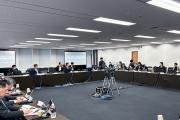A recent survey by the Central Social Insurance Medical Council, a reimbursement policy panel better known as Chuikyo, found that 8.2% of hospitals have formularies, compared to 3.5% in a survey conducted in the previous year. A simple comparison is…
To read the full story
Related Article
REGULATORY
- OTC-Like Drugs Left in Limbo as Panel Debates Cost-Sharing without Clear Policy Signal
December 19, 2025
- LDP, Ishin Fail to Seal Deal on OTC-Like Drugs as Talks Stall over Fiscal-Savings Figure
December 18, 2025
- Japan Moves LLP Payment Hike toward Political Call, Eyes 1/2 or Higher
December 18, 2025
- Panel to Weigh Orphan Designation for Tecartus on December 22
December 17, 2025
- LDP League Formally Urges Male HPV Shots Under NIP from FY2026
December 17, 2025
Let’s be real: even with the best intentions, AI systems can reflect our own unconscious biases. As Daniel Kahneman and Amos Tversky famously demonstrated in their groundbreaking work on Prospect Theory, humans are prone to cognitive biases that influence our…











